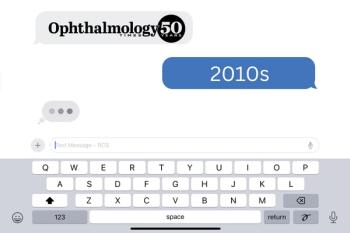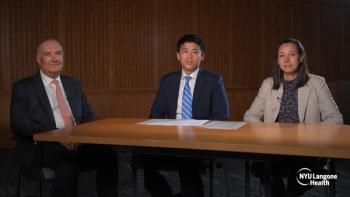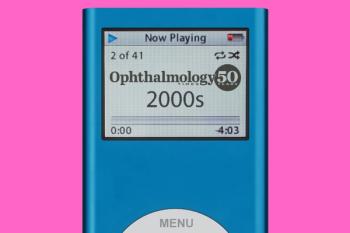
- Ophthalmology Times: March 15, 2021
- Volume 46
- Issue 5
Making sutureless double-needle scleral IOL fixation technique more accessible
Practice and preparation are key for mastering the procedure.
Special to Ophthalmology Times®
Special to Ophthalmology Times®
There are several ways of treating patients with a dislocated
I consider it safer than scleral-sutured IOLs because it requires smaller incisions (3 mm vs 7 mm for suture techniques), and the haptic fixations used in this approach allow for consistency and longevity in comparison with the scleral sutures.
The technique is even simpler than the glue-assisted intrascleral fixation because it does not require creating scleral flaps.
Related:
But despite its elegant conception, the Yamane technique can be tricky, particularly if you do not have the right tools at hand.1,2
Finding the right tools
First, you need a suitable IOL. My current preferred one is a 3-piece SofPort lens (LI61AO; Bausch + Lomb).
The lens is fairly straightforward to use in the scleral IOL fixation technique; you just need to remember not to grab the haptics too aggressively because they could break. Another IOL option is the CT Lucia 602 (Carl Zeiss Meditec) with resilient polyvinylidene fluoride haptics.
Of course, you need more tools than the IOL. The Yamane technique requires accurate measurement and marking, the creation of intrascleral tunnels, and careful externalization of the IOL haptic to facilitate IOL centration.
Related:
Typically, you would need to order the individual items from various vendors, but since adopting the Scleral IOL Fixation Solutions Pack (SFP-1001; MicroSurgical Technology [MST]) into our practice, we have been able to perform the Yamane technique more consistently.
The pack
The pack is so easy to use that it can take the stress out of performing the procedure. This is particularly so for surgeons who do not have much experience performing the Yamane technique, which was my case.
Before learning this technique, I used to perform the glue-assisted intrascleral fixation technique, which could sometimes cause challenges with the alignment (which needs to be exactly 180º if you want to avoid tilting the IOL).
Accurate alignment is even more important with the Yamane technique, and this is where you see that these instruments are really designed with the surgeon in mind.
This company is quite good at finding a specific need and creating the ideal solution. A great example is the marking guide for making the scleral marks by which the needles will be introduced.
Related:
These markings need to be exactly 180º apart or you risk tilting the IOL. But with the centration marking guide included in the pack, the marking is accurate and effortless.
Other tools in the pack that I like are the needle holders. These make inserting and manipulating the new low-profile 30-gauge thin wall needles much easier, while allowing an ideal visibility to perform the delicate maneuvers needed during the Yamane technique. (There are 3 of these needles, so you have 1 extra for backup, just in case).
The needles come with silicone stoppers, which is a very smart way of assuring the surgeon that they will not lose the needles while inserting the haptic or the second needle.
Related:
An extraordinary patient
One of my recent cases requiring IOL fixation involved a 95-year-old woman in excellent health with IOL dislocation.
Her daughter had noticed that her mother was having some difficulty navigating around and that she was less sure of herself because she had lost her binocular view.
The retina surgeon did a vitrectomy, after which she had no capsule left. At that point, as a surgeon, you are faced with the challenge of how you are going to fixate this IOL without a capsule, and I thought she was a perfect candidate for the Yamane technique.
I really wanted to help this woman because at that age there is an increased risk of falling, which could greatly impact her quality of life. (See "Scleral IOL fixation technique".)
Related:
One day postoperative the patient’s vision was already around 20/50 uncorrected. Within a couple of weeks, she was doing well and was back to a full life.
At 95, that may seem like an exaggeration, but this woman appeared much younger than her actual age.
Conclusion
Now that I have the essential tools for the Yamane technique at hand, I have been able to use the sutureless transscleral IOL fixation technique for the benefit of my patients more consistently.
With a little practice, and the right tools, any surgeon should be able to master this elegant and safe technique.
About the author
Audrey R. Talley Rostov, MD
e:[email protected]
Talley Rostov is in private practice at Northwest Eye Surgeons in Seattle, Washington. She is on the medical advisory board at SightLife, also in Seattle, and is a consultant to Alcon, Bausch + Lomb, and Lensar.
Articles in this issue
over 4 years ago
Seeking a new frontier with intraoperative OCTover 4 years ago
IRISS registry study offers real-world outcomesover 4 years ago
New options continue to fill sustained drug delivery pipelineover 4 years ago
Intracanalicular dexamethasone insert offers hands-free therapyover 4 years ago
SMILE offers low enhancement rate after nomogram adjustmentNewsletter
Don’t miss out—get Ophthalmology Times updates on the latest clinical advancements and expert interviews, straight to your inbox.



















































.png)


